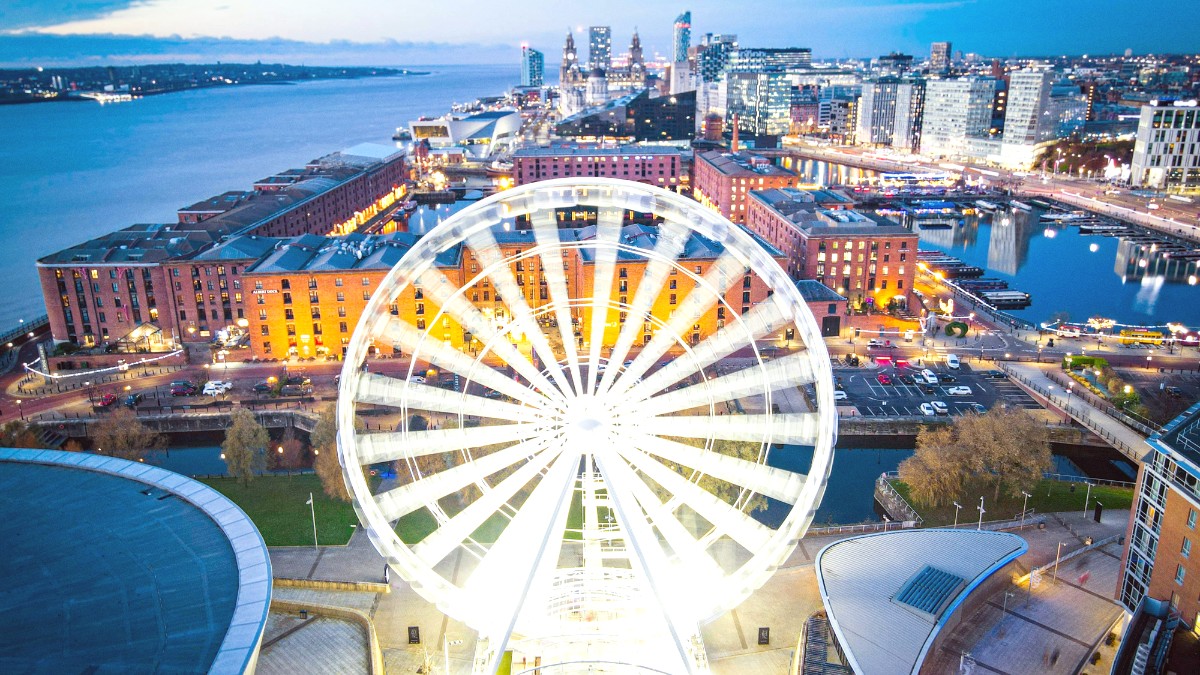
Northwest England, England
Liverpool's skyline is punctuated by landmarks that tell its story, from maritime heritage to musical legends and architectural wonders. Each site has its own tale, inviting exploration.
Plan your visits well; checking official websites for hours, fees, and booking is always advisable. Pre-booking for popular sites can bypass queues.
The Royal Liver Building 360 Tour makes for an unique opportunity to ascend to the top, see the famous Liver Birds up close, and enjoy breathtaking city views.
Aim for early morning or late afternoon for softer light and stunning reflections.
Capture their contrasting architectural styles. The Anglican Cathedral's tower tour has unparalleled city views.
Essential for close-up views of the Liver Birds and spectacular panoramas.
Weekdays or early/late hours for popular indoor attractions.
Walk further along the waterfront past the Cruise Terminal for different perspectives of the Three Graces.
Liverpool boasts a remarkable collection of museums and cultural institutions, many having free admission. Explore its history, art, and global connections.
A treasure trove of natural history, world cultures, and ancient civilizations. Highlights: Egyptology collection, dinosaur gallery, planetarium. Free entry.
This museum tells the comprehensive story of Liverpool's history, its people, and its unique culture. Free entry.
Explore Liverpool's profound maritime heritage, including its pivotal role in the Lusitania and Titanic stories. This museum also holds the powerful International Slavery Museum. Free entry.
At Albert Dock, this modern and contemporary art gallery showcases works from the Tate national collection and hosts temporary exhibitions. Free entry for most permanent collections.
Powerful exhibitions that confront historical and contemporary slavery. An important educational experience.
Near the Cunard Building, this interactive museum charts British music history from 1945. It has memorabilia, instruments, and interactive displays. GetYourGuide.
An underground wartime bunker, this preserved command center has a fascinating look into Battle of the Atlantic operations during WWII. It has an immersive historical experience.
An independent photography gallery on the waterfront, demonstrating contemporary photography.
Check individual museum and gallery websites for current temporary exhibitions, special events, and programming. These rotating displays often feature unique collections or themes, a fresh reason to visit. A Good camera is suggested to capture the city's beauty.
Liverpool's streets and buildings whisper tales of centuries past. Explore its historical districts, religious sites, and monuments.
While mainly an urban destination, Liverpool has peaceful green spaces and coastal areas for relaxation and natural beauty.
The River Mersey is the city's defining waterway. Mersey Ferries have scenic cruises that help you appreciate the river's historical and contemporary significance.
Liverpool's parks are excellent for walks, picnics, and enjoying nature within the city. Many have Green Flag status, indicating high quality.
Explore the city's defining waterway and nearby coast for unique experiences.
Gain breathtaking views of the city, river, and beyond.
While not a main wildlife destination, Liverpool has specific areas for encounters.
Beyond the popular sites, Liverpool has several hidden gems and local favorites offering unique experiences and photographic opportunities. Seek these for a connection with the city.
A regenerated creative quarter, a true hidden gem with independent venues and street art.
Stunning interiors including the Picton Reading Room and a rooftop terrace with city views.
Home to Antony Gormley's 'Another Place' art installation, having 100 iron figures gazing out to sea. A unique photo opportunity.
This bohemian street in the Aigburth suburb has independent shops, cafes, bars, and restaurants. It is perfect for a leisurely afternoon away from the city center.
An iconic neoclassical building often overlooked. Step inside to discover magnificent interiors and learn its history.
Liverpool's ornate Chinese Arch, one of the largest in Europe, is a symbol of its historic Chinatown and a colorful photo spot.
A beautiful expanse of wide sandy beach and dunes, backed by pine woods. One of the few places in England for native red squirrels. An excellent day trip.
Strolling along the promenades at Pier Head and beyond has expansive views of the River Mersey, the Wirral, and ships passing in and out of the estuary.
Liverpool's history is deeply connected to its industrial and military past.
Explore Liverpool's architectural grandeur from different eras.
Significant geological features are not a prominent characteristic of Liverpool's immediate landscape.
The city is built on relatively flat land near the river.
This map shows attractions. Walking is a popular way to explore central Liverpool.
Within easy walking distance for most visitors.
Walkable or a short bus/taxi ride.
Accessible by public transport (bus/Merseyrail).
These locations offer a different view of Liverpool beyond the immediate city core.
Further afield, a day trip away.
Great for nature lovers or families looking for a day out.
Areas known for their cultural life and independent spirit.
Ideal for art, food, and unique local finds.
Central Liverpool is very walkable, with many attractions close to each other.
Extensive bus network and Merseyrail train system link all parts of the city and surrounding areas.
Liverpool Citybike (managed by Beryl) has a convenient docking station-based bike hire scheme for casual city cycling.
Many of Liverpool's museums and galleries have free admission to their permanent collections, making cultural exploration budget-friendly.